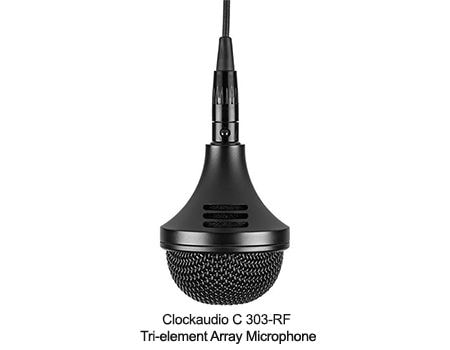Guide
Tech Tuesdays: Microphones in a Modern Meeting Space
21/07/2021
Microphones in a Modern Meeting Space
It’s now the beginning of 2021 and we have certainly seen a lot of changes in the world over the past year, AV integration is no exception! Integrators everywhere are being asked to design systems to meet the latest requirements in line with the current guidelines, and attention to detail is as important as ever. Making sure that everyone is heard when meetings are held remotely is critical.
Where do you begin when choosing microphones for a meeting space in these changing times? Flexibility is key; installed solutions must be able to adapt to new layouts without hassle or sacrificing on performance.
Let’s take a look at a few options when planning a meeting space:
There are a few microphone formats to consider: ceiling and desk-top mounted are typically the most popular for meeting rooms, each with their own benefits.
On one hand we have the beam-forming array microphones – such as the Shure MXA and Sennheiser TCC ranges. These are active ceiling mounted microphones, meaning they are powered by network switches with PoE (Power over Ethernet). Paired with their onboard digital processing, the microphone can make intelligent decisions regarding pickup patterns. The MXA and TCC microphones are optimised for pickup distance of between 4 and 6m – meaning a single microphone can sometimes pickup an entire room with equal clarity, regardless of participants’ distance from the microphone itself. They can be programmed for blanket room pickup or targeted beams, meaning they are suitable for meeting rooms whether the layout is flexible or fixed – or a bit of both!

The analogue counterparts to these – such as the Clockaudio C303-RF or the Audix M3 – are also great options. Though they are not active in the same way, they each use three condenser capsules to achieve 360-degree coverage. While they do not boost distant participants the same way as the array microphones, the combination of three capsules achieves a similar shape of coverage with a shorter diameter.

Ceiling microphones in particular are growing in popularity, especially as we gear towards touchless meeting spaces. Mounting location is very important here too, though. While we might think that mounting microphones in the middle of the room seems most logical, meeting spaces are a bit opposite to this thought! Because participants tend to all face the same way, to a display or camera, this can mean that placing a microphone in the middle of the ceiling leads to people speaking in the opposite direction of the microphone. For this reason, we recommend moving the microphone towards the display/camera side of the room, so that everyone is speaking towards it.

Sometimes, ceiling microphones aren’t practical; listed buildings, high and open ceilings, these all lead to a different solution. Desktop microphones, especially wireless, are another great way to maintain the same clarity you can get from mounting above. In meeting spaces, we would recommend license free solutions for ease of deployment. Wireless microphones using DECT technology self-manage their frequency allocation, so they are very user friendly. Shure MXW and Sennheiser Speechline are great options here – and they both offer desktop gooseneck and boundary options.
Wireless microphones are especially useful, as they fit any layout; just give each user a microphone at the start of the meeting, and management is simple. Since each user has their own microphone in front of them, clarity and equal level is maintained throughout the duration. Placement is simple, as most of these microphones offer a cardioid pickup, meaning they pickup in a cone shape in front of the capsule. Some boundary microphones even offer omnidirectional pickup, so a single boundary can offer 360-degree pickup within short range.
When designing and choosing microphones for any meeting space, it’s important to take note of the room itself. What does it sound like? For more information on improving room acoustics, check out our previous Tech Tuesday video below.
If you want to use microphones to lift within a room, you can also look at our previous video on Voice Lift below.
Hopefully this has given you some direction on choosing a microphone for modern meetings! Once you’ve selected a microphone best suited for your application, you’ll want to start looking at DSP options. These are just as varied as the microphone options, so stay tuned to our upcoming Tech Tuesday releases for more information on the next steps!
Interested in more information on how microphone technologies can benefit your next meeting space project? Get in touch with our Application Support Team.
